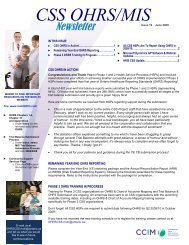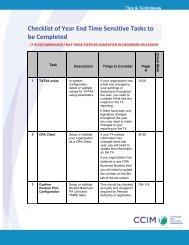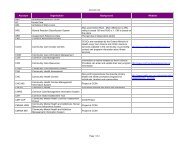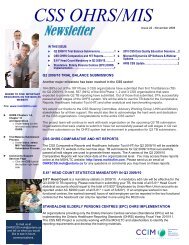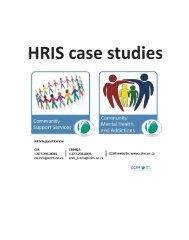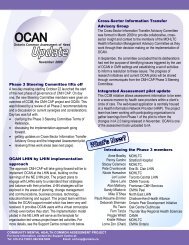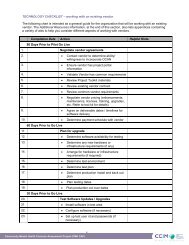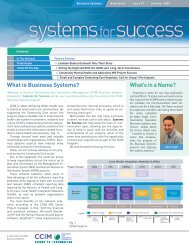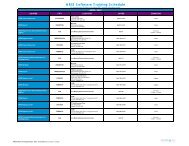RAI-MDS 2.0 Nutritional Care Resource Guide April 2011 - CCIM
RAI-MDS 2.0 Nutritional Care Resource Guide April 2011 - CCIM
RAI-MDS 2.0 Nutritional Care Resource Guide April 2011 - CCIM
- No tags were found...
You also want an ePaper? Increase the reach of your titles
YUMPU automatically turns print PDFs into web optimized ePapers that Google loves.
PLAN OF CARE DEVELOPMENT1. Problem Statement:State problem, etiology/cause, signs and symptoms (PESS)State the problem clearly using data or RAP triggers to support your problem statemente.g. Gradual weight loss related to swallowing difficulty and recent pneumonia as evidenced by:leaving 25% or more food uneaten at most meals and complains about the taste of foods2. Goal:• Include improvement goals, prevention goals, palliative goals or maintenance goals• Should be Specific, Measurable, Acceptable, Realistic and Time limited (SMART)• State in terms of resident achievemente.g.5. Resident will return to her usual goal weight by next quarter6. Resident will eat more than 75-100% of food at most meals by Aug 123. Interventions:• The steps that staff takes to assist the resident to achieve the identified goal(s)• Must have short, concise, realistic, measurable and achievable instructions, which can beunderstood by all staff• Should be documented in the health record according to home’s policye.g.• Offer resident her special supplements in between meals• Monitor and document food intake for one week and then re-evaluate4. Responsible Person/Discipline:• Identify care team member(s) who is responsible for the implementation and/or monitoring ofthe outcome5. Review Date:• Set target date to review the goals and document on quarterly basis whether those goals havebeen metHELPFUL TIPS ON MAKING THE PLAN OF CARE REALISTIC AND USEFUL7. Have a plan of care that is clear, current, accurate, useful and accessible by all care teammembers. Focus on the quality of content in the plan of care rather than quantity of words.(quantity does not mean quality!)8. Include the inputs of the resident, significant others and the front line staff in the care plandevelopment9. Do not address every RAP on the plan of care, address only those RAPs and non-triggered clinicalproblems that need preventative measures or need to be closely monitored. The plan of care mayreflect:- Rehabilitation- Prevention of complications- Prevention of current problems from worsening- Palliative careFor Information: 416.327.7625 10ltchrai@ontario.ca10




